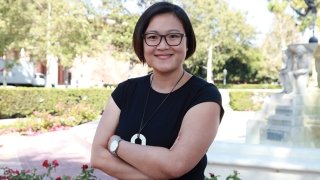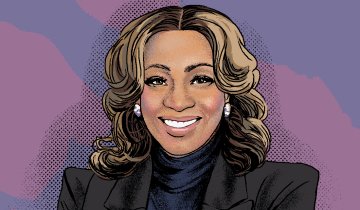Cheryl Ching PhD ’17, who completed her dissertation on constructing and enacting equity at a community college, is recipient of the 2017 Bobby Wright Dissertation of the Year Award from the Association for the Study of Higher Education (CUE). Throughout her graduate studies, she worked at the Center for Urban Education, and she has returned to the center this year as a postdoctoral fellow and research associate. Her work is being supported by a grant from the Bill and Melinda Gates Foundation.
We spoke to her about the meaning of equity in her work.
Why is equity such a challenging term?
For me, equity falls into the same bucket as “democracy” or “love.” My dissertation examines how a college defines what equity means. The faculty and administrators I interviewed each had their own way of expressing what equity means to them. With all of these individual expressions of equity, imagine the challenges this college and others can have with agreeing on an organizational definition. By the end of my data collection, practitioners at my research site still had trouble articulating the meaning of equity for their college.
The thing is, as I worked on piecing together the story, I found that despite the feeling of uncertainty around the college’s definition of equity, in fact, they were constructing a meaning, in part through the actions of campus leaders and faculty. So, even without an explicit document or plan that clearly stated a shared definition of equity, the college had one.
Much of CUE’s work revolves around “equity-mindedness,” which is about approaching inequalities in educational outcomes for students of color from a perspective of race, agency and change. Was equity-mindedness apparent at your research site?
I found that this college adhered closely to one facet of equity-mindedness, which is that practitioners are responsible for their students’ learning, experiences and outcomes. The leaders continually expressed that they cannot control many of the factors that impact their students —income issues, housing instability, food security — but there are many other things they can control, and they were going to take responsibility for those things.
Were there ways in which they didn’t adhere to equity-mindedness?
For CUE, race and race-consciousness are fundamental aspects of equity mindedness. At this college, while there was a consciousness of race, equity-mindedness was sometimes used in a race-blind matter. I heard on several occasions how being equity-minded is about serving all students, not just students of color.
Why is race fundamental to equity-minded thinking?
All too often, talk about students is in the aggregate. “Our students are engaged.” “Our students are learning.” “Our students are not learning.” But CUE tries to disrupt that thinking by asking, “Who are you talking about when you say ‘students’? Who do you imagine when you say ‘students’? When you say that your teaching works for students, which students are we actually talking about?”
In particular, CUE tries to get practitioners to think about whether and how teaching, advising and other practices work for African-Americans, Latinx and other racially minoritized students since many higher education practices were not designed for their benefit. So the question becomes, how does a practice work for an African-American student, a Latinx student?
What is CUE doing to ensure that practitioners develop equity-mindedness in the way you described?
We’re starting to think about equity-mindedness as a “competency,” and to break it down into its component parts. What is the knowledge that practitioners need to have to be equity-minded? What are the skills that they need to develop? What are the behaviors that they need to enact? What are the kinds of belief changes that need to happen in order for this concept to be real? These are the questions we are asking, and with any luck, the answers will help us refine our tools and our approach with campuses.




